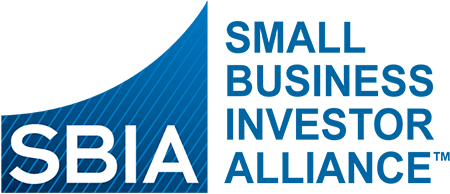Podcast: How to Raise $175 Million for Private Equity Funds from the Government
June 5, 2025 (Washington, DC) – On the latest How I Invest podcast, SBIA President Brett Palmer and David Demeter, who manages Davidson College’s endowment, take a deep dive with host with David Weisburd into one of private markets’ most powerful but under-the-radar capital structures: Small Business Investment Companies (SBICs). This episode unpacks how SBICs – public-private partnerships that provide private equity and credit funds with 2:1 fixed-rate, non-recourse leverage from the U.S. government – are delivering equity-like returns with credit-like risk, and why the lower middle market remains a goldmine for savvy allocators.
Key Highlights:
- SBIC Outperformance: According to a UNC-Chapel Hill study, SBIC funds have outperformed benchmarks by ~4% net IRR, with net-of-fee levered returns often exceeding gross-of-fee unlevered returns—a rare feat in private markets.
- Attractive Leverage: SBICs can borrow up to $175 million at 10-year fixed rates, typically just 50–80 basis points over Treasuries, with no refinancing risk and non-recourse terms.
- Scale for Managers, Amplified Returns for LPs: Managers gain scale and larger fee bases, while LPs enjoy levered returns—often achieving equity-like returns for debt-like risk, especially in the inefficient lower middle market.
- Lower Middle Market Alpha: The lower middle market remains underprofessionalized and rich with alpha, offering more inefficiencies and value-creation opportunities than upper market segments.
- Growth and Impact: The SBIC program has grown from $2 billion to over $50 billion in AUM since 2008, supporting job creation and economic growth across the U.S. by channeling capital into small businesses.
- Eligibility and Barriers: SBIC managers must have a proven track record, invest exclusively in U.S.-based small businesses, and undergo a rigorous, year-long licensing process, including FBI background checks.
- LP Base and Scale Limits: Most SBICs are smaller funds ($50–$200 million in LP capital), making them ideal for family offices, smaller endowments, and banks, but less accessible to mega-institutional LPs.
- Davidson’s Barbell Strategy: Davidson College combines high-performing venture and niche private strategies like SBICs, targeting 3x net MOIC with less risk and emphasizing inefficiency as a source of structural alpha.
About the Small Business Investor Alliance (SBIA)
The Small Business Investor Alliance (SBIA) is the premier organization of lower middle market private equity funds and investors. SBIA works on behalf of its members as a tireless advocate for policies that promote competitive markets and robust domestic investment for growing small businesses. SBIA has been playing a pivotal role in promoting the growth and vitality of the private equity industry for over 65 years. For more information, visit www.SBIA.org or call (202) 628-5055.
About Brett Palmer
Brett Palmer is President of the Small Business Investor Alliance (SBIA), the leading advocacy group for SBIC fund managers and investors. Since 2008, he has played a pivotal role in modernizing and expanding the SBIC program, which now exceeds $50 billion in assets.
About Davidson College Endowment
Davidson College’s endowment employs a differentiated approach, emphasizing inefficiency and niche strategies to deliver long-term value for the college and its stakeholders.
About David Demeter
David Demeter helps manage Davidson College’s endowment, leading investments across hedge funds, venture capital, and private equity. Davidson is known for its barbell investment strategy, combining high-performing ventures with niche private strategies like SBICs to generate outsized, risk-adjusted returns.


